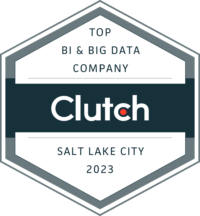In the intricate dance of digital marketing, where every click and scroll holds potential insight, the real mastery lies not in gathering vast amounts of data but in unlocking its true power.
The landscape of digital marketing is dynamic, shaped by rapid technological advancements, evolving consumer behaviors, and an ever-competitive marketplace.
In this environment, the distinction between simply having data and leveraging it effectively becomes the dividing line between good and great marketers.
Let’s talk about how owned and third-party data can serve as foundational pillars for insightful marketing.
From the granular insights hidden within the data you own to the broader perspectives gained from external sources, we explore the synergy that drives smarter, more impactful marketing decisions.
This exploration is not just about analytics; it’s a call to action for marketers to harness the potential within their reach, using data to craft strategies that truly resonate with audiences.
As we navigate from the specifics of owned data analysis to the strategic integration of third-party insights, and the pivotal role of market research, our goal is to illuminate the path to data-driven marketing excellence.
Insights from Owned Data: Leveraging What You Know to Drive Growth

In the bustling world of digital marketing, the goldmine of owned data often sits underutilized. As we delve into this rich reservoir of insights, it becomes clear how crucial understanding and leveraging this data is for crafting strategies that not only resonate with our audience but also significantly drive performance and growth.
Comparing Data Against Benchmarks
Navigating Through Competitive Waters with Benchmarking
Benchmarking is not merely about setting goals; it’s about understanding where we stand in the digital arena and how we can pivot our strategies for better performance.
This process involves meticulous comparison in several key areas:
- SEO Performance and Rankings: By examining our website’s search engine ranking and performance, we can uncover areas for SEO strategy refinement, ensuring we stay ahead of the curve.
- PPC Costs and Volume: Assessing our investment in pay-per-click advertising against its returns helps in fine-tuning our ad spend for maximum ROI.
- Channel Performance: Understanding which marketing channels are the most effective allows us to allocate resources more efficiently, enhancing our overall marketing strategy.
- Click-through Rates and Cost per Acquisition: These metrics provide insight into the effectiveness of our advertisements and the cost-efficiency of acquiring new leads or customers.
- Conversion Rates and Website Performance: Evaluating our website’s ability to convert visitors into customers is paramount.
This assessment can reveal much about the user experience and areas for improvement.
By comparing our data against industry benchmarks, we can set realistic, achievable goals that drive our marketing efforts forward.
Combining Data with Other Sources
Enriching Our Marketing Palette with Data Enrichment
Data enrichment involves augmenting our owned data with external information to gain a comprehensive understanding of our audience.
This process allows us to:
- Enhance Audience Profiles: By integrating third-party data, we can enrich our understanding of our audience’s demographics, interests, and behaviors, tailoring our marketing strategies to meet their needs more effectively.
- Identify Unique Insights Through Comparison: Comparing enriched data segments helps in uncovering unique insights, enabling targeted marketing efforts that resonate more deeply with specific audience segments.
- Draw Broader Market Comparisons: Enriched data provides a wider context, allowing us to see how our owned data stacks up against broader market trends and behaviors.
Conducting Market Research
Exploring New Horizons with Market Research
While owned data offers a deep dive into our existing audience, market research opens the door to understanding potential customers and broader market trends.
This exploration can be achieved through:
- Engaging Non-Customers: By reaching out beyond our existing customer base, we can gather insights about untapped market segments and their needs.
- Analyzing Rates and Distributions: Investigating aspects such as conversion rates among different demographics or traffic sources can spotlight new opportunities for growth or areas needing refinement.
Though often overlooked in favor of more direct data sources, market research provides a fresh perspective, helping us to challenge our assumptions and explore new marketing frontiers.
Insights from Third-Party Data: Broadening Our Marketing Perspectives

While insights from owned data offer a deep dive into our audience’s behaviors and preferences, integrating third-party data opens up new avenues for strategic growth.
This external data, sourced from beyond our immediate digital ecosystem, serves as a powerful tool for benchmarking, enriching our audience profiles, and conducting comprehensive market research.
Benchmarking: Gauging Our Standing in a Wider Context
Stepping Up the Competitive Analysis
Benchmarking against industry standards and competitors is crucial for understanding our position in the market.
Third-party data facilitates this by:
- Offering Comparative Insights: Access to broader industry data allows us to see where we stand in terms of traffic generation, engagement, and conversion rates relative to our competitors.
- Highlighting Opportunities for Improvement: By understanding the performance benchmarks within our industry, we can identify areas where our strategies might need refining or where we can capitalize on untapped opportunities.
Utilizing third-party data for benchmarking not only informs our strategic decisions but also helps in setting more informed goals that are aligned with industry standards.
Data Enrichment: Enhancing Our Audience Understanding
Diving Deeper into Audience Profiles
Data enrichment through third-party sources is about adding layers to our audience profiles, thereby enhancing our marketing strategies.
This can involve:
- Building Interest-Based Profiles: Using external data to add depth to our understanding of our audience’s interests and behaviors, allowing for more targeted and personalized marketing efforts.
- Geographical and Demographical Insights: Approximating geography or company ownership through IP addresses enriches our targeting, especially in B2B contexts, making our marketing efforts more precise and effective.
By combining our own data with external insights, we create a richer, more detailed picture of our audience, enabling strategies that are both more engaging and more likely to convert.
Market Research: Exploring Beyond Our Boundaries
Gathering External Insights for Strategic Advantage
Market research, often facilitated by third-party agencies, provides a window into the wider market and potential customer bases.
This involves:
- Utilizing Third-Party Expertise: Engaging with specialized agencies can offer insights into market trends, consumer behaviors, and the competitive landscape that we might not have access to through owned data alone.
Testing and Validating New Ideas: Market research can be instrumental in testing new product ideas, marketing messages, and user experiences with a broader audience, providing valuable feedback before a full-scale launch.
While market research requires investment, its value in providing a broader understanding of the market and new opportunities can be significant, especially when combined with the insights from owned data.
Evaluating the Effectiveness and Value of Market Research in the Mid-Market

Market research has long been a cornerstone in the arsenal of marketers, offering insights that extend beyond the immediate purview of owned and third-party data.
Yet, its effectiveness and the value it brings, especially to mid-sized businesses, warrant a closer examination.
This section probes the practicality, benefits, and potential limitations of market research within the context of mid-market digital marketing strategies.
Market research serves as a critical tool in validating hypotheses about market trends, consumer behavior, and product viability.
It can significantly impact strategic decisions by:
- Providing a Broader Market Perspective: Beyond the confines of existing customer data, market research offers a glimpse into the broader market landscape, including potential customers and untapped segments.
- Testing Product and Marketing Concepts: Before committing significant resources to new initiatives, market research allows businesses to test the waters, gathering feedback on product concepts, marketing messages, and more.
The Mid-Market Consideration: Cost vs. Value
For mid-sized businesses, the decision to invest in market research is often weighed against the anticipated value it can deliver.
While large enterprises might absorb the costs more readily, mid-market companies face unique considerations:
Resource Allocation: With typically tighter budgets, mid-market businesses must carefully consider the allocation of resources toward market research, balancing the immediate costs against the long-term strategic benefits.
Actionable Insights: The key metric for evaluating the success of market research is the actionability of the insights it provides.
For the mid-market, the focus is on obtaining clear, actionable data that can directly influence strategy and bottom-line results.
Questioning the Universal Applicability of Market Research
Is Market Research Right for Every Mid-Market Player?
While the benefits of market research are clear, its universal applicability, especially within the mid-market, remains a topic of debate.
Factors such as industry specificity, the company’s strategic goals, and the availability of alternative data sources play significant roles in determining its value:
Industry-Specific Needs: Certain industries may derive more benefit from market research than others, depending on factors like market volatility, competition, and customer engagement channels.
Strategic Goals Alignment: The decision to engage in market research should align with the company’s strategic goals, whether that’s expanding into new markets, refining product offerings, or enhancing customer experience.
Alternative Data Sources: With advancements in data analytics and the availability of comprehensive third-party data, some companies may find that their needs for insights are sufficiently met without the additional investment in market research.
Additional Categories of Insights

As we’ve traversed the landscape of digital marketing insights, from the granular details housed within owned data to the expansive view offered by third-party sources and the strategic depth of market research, it’s clear that the quest for understanding is ever-evolving.
Yet, the universe of insights is expansive, with new stars being born from the nebula of our collective experience and innovation.
The Invitation to Innovate
A Call for Collective Wisdom
The digital marketing realm thrives on innovation, and it’s through our shared challenges and successes that we can discover new methodologies, tools, and perspectives.
Emerging Data Sources: With technology evolving at a breakneck pace, new data sources are continually emerging.
From IoT devices to augmented reality interactions, these novel sources can offer fresh insights into consumer behavior and preferences.
Advanced Analytic Techniques: The development of more sophisticated analytics tools and techniques, such as predictive modeling and machine learning, opens up possibilities for deeper understanding and foresight into market trends.
Cross-Industry Learnings: Insights and strategies from one industry can often be adapted and applied to another, offering cross-pollination opportunities that enrich our approach to marketing challenges.
Fostering a Community of Insight-Driven Marketers
Building Bridges, Not Silos
Our journey through the realms of data and insights is not a solitary trek but a collective expedition.
By fostering a community where knowledge is shared freely, we encourage not only the growth of individual marketers but also the advancement of the field as a whole.
Share Your Stories: Whether it’s a surprising finding from a new data analysis technique or a success story from leveraging an unconventional data source, your experiences can inspire and guide others.
Engage in Collaborative Learning: Through forums, webinars, and industry conferences, engaging with peers can spark new ideas and foster collaborations that push the boundaries of what’s possible in digital marketing.
Charting the Course Forward

As we conclude this exploration into the vast and varied landscape of marketing insights, it’s clear that our journey is far from over.
The field of digital marketing is in constant flux, driven by technological advancements, shifting consumer behaviors, and the ever-present challenge of cutting through the noise to reach our audience effectively.
In embracing both the depth of owned data and the breadth of third-party insights, augmented by the strategic depth of market research, we equip ourselves with a multifaceted lens through which to view our marketing strategies.
Yet, the potential for discovery extends beyond these realms, into new categories of insights born from our collective innovation and shared experiences.
We stand on the precipice of the future, a future we have the power to shape through our curiosity, our willingness to explore, and our commitment to sharing knowledge.
Let’s continue to chart this course together, pushing the boundaries of what’s possible in digital marketing and beyond.
To our readers and the broader marketing community, we extend our gratitude for joining us on this journey.
Your insights, experiences, and questions enrich our collective understanding and drive us forward.
Together, let’s keep the spirit of exploration alive, for it’s in the pursuit of the unknown that we find the most valuable treasures.











